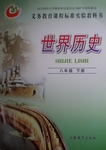题目内容
16.The garden city was largely the invention of Ebenezer Howard (1850-1928).After immigrating from England to the USA,and an unsuccessful attempt to make a living as a farmer,he moved to Chicago,where he saw the reconstruction of the city after the disastrous fire of 1871.In those days,it was nicknamed"the Garden City",almost certainly the source of Howard's name for his later building plan of towns.Returning to London,Howard developed his design in the 1880s and 1890s,drawing on ideas that were popular at the time,but creating a unique combination of designs.The nineteenthcentury poor city was in many ways a terrible place,dirty and crowded; but it offered economic and social opportunities.At the same time,the British countryside was in fact equally unattractive:though it promised fresh air and nature,it suffered from agricultural depression(萧条) and it offered neither enough work and wages,nor much social life.Howard's idea was to combine the best of town and country in a new kind of settlement,the garden city.Howard's idea was that a group of people should set up a company,borrowing money to establish a garden city in the depressed countryside,far enough from existing cities to make sure that the land was bought at the bottom price.
Garden cities would provide a central public open space,radial avenues and connecting industries.They would be surrounded by a much larger area of green belt,also owned by the company,containing not merely farms but also some industrial institutions.As more and more people moved in,the garden city would reach its planned limit-Howard suggested 32,000 people; then,another would be started a short distance away.Thus,over time,there would develop a vast planned house collection,extending almost without limit; within it,each garden city would offer a wide range of jobs and services,but each would also be connected to the others by a rapid transportation system,thus giving all the economic and social opportunities of a big city.
32.How did Howard get the name for his building plan of garden cities?D
A.By taking other people's advice.
B.Through the combination of different ideas.
C.Through his observation of the country life.
D.By using the nickname of the reconstructed Chicago.
33.According to Howard,garden cities should be builtB.
A.as far as possible from existing cities
B.in the countryside where the land was cheap
C.in the countryside where agriculture was developed
D.near cities where employment opportunities already existed
34.The passage mainly talks aboutC.
A.a new city in Chicago
B.the invention of the garden city
C.a well-known garden city in England
D.the differences between the countryside and the city
35.What can we learn about garden cities from the last paragraph?A
A.Their number would get larger and larger.
B.Every garden city would continue to become larger.
C.more and more people moved out of the garden city.
D.Each garden city would offer a wide range of houses.
分析 本文介绍了Ebenezer Howard最先发明出来的The garden city的发展过程和相关的信息.
解答 D B C A
32.D 细节题.根据第一段4,5行In those days,it was nicknamed"the Garden City",almost certainly the source of Howard's name for his later building plan of towns.可知,在那个时代 Howard 将重建后的城市命名为"the Garden City",后来成为他建筑城镇计划名字的来源,说明D项正确.
33.B 细节题.根据第二段最后3行borrowing money to establish a garden city in the depressed countryside; far enough from existing cities to make sure that the land was bought at the bottom price.说明这样的地方应该是在土地相对便宜的乡下,故B项正确.
34.C 主旨大意题.本文主要就是介绍了Ebenezer Howard最先发明出来的The garden city的发展,故C项正确.
35.A 推理题.根据最后一段3,4,5行As more and more people moved in,the garden city would reach its planned limit-----Howard suggested 32,000 people; then,another would be started a short distance away,可知当越来 越多的人搬进来之后,花园城市也达到极限了,但是Howard建议城市容纳32000人,接着在不远的地方又新建另外一座城市,所以城市数量越来越大,故A正确.
点评 本文的内容较为抽象,考生不是很熟悉,以推理题的考查为主,推理判定题要在阅读理解整体语篇的基础上,把握文章的真正内涵.①要吃透文章的字面意思,从字里行间捕捉有用的提示和线索,这是推理的前提和基础;②要对文字的表面信息进行挖掘加工,由表入里,由浅入深,从具体到抽象,从非凡到一般,通过分析、综合、判定等,进行深层处理,符合逻辑地推理.不能就是论事,断章取义,以偏概全.③要忠实于原文,以文章提供的事实和线索为依据.立足已知,推断未知.立足现在,猜测未来.不能主观臆想,凭空想象,随意揣测,更不能以自己的观点代替作者的观点;④要把握句、段之间的逻辑关系,了解语篇的结构.要体会文章的基调,揣摸作者的态度,摸准逻辑发展的方向,悟出作者的弦外之音.

 探究与巩固河南科学技术出版社系列答案
探究与巩固河南科学技术出版社系列答案| A. | has tried | B. | have tried | C. | has been tried | D. | have been tried |